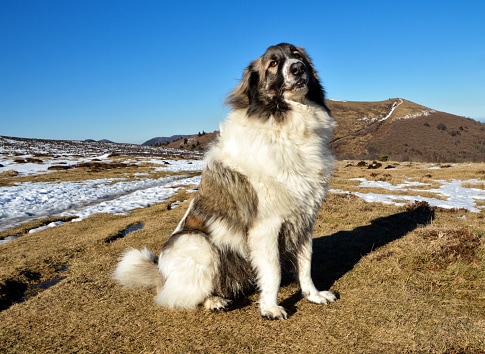One of the first commands you should teach your dog is “stay.” This command can keep your dog safe and give you peace of mind. However, it’s also one of the most difficult commands for dogs to learn. Read on to learn techniques for mastering the stay command and teaching your dog to stay in place.
Why Should You Train Your Dog to Stay?

Mastering the stay command keeps both you and your dog safe.
©Alexander_Evgenyevich/Shutterstock.com
Training your dog is important for several reasons. First of all, you are teaching your dog how to behave as a good canine citizen. Secondly, you’re building your dog’s confidence by providing structure. Ultimately, you’re also building the bond between you and your pup.
Teaching your dog the stay command ensures that they won’t run away when they want to chase after a car, bike, or squirrel. You’ll also feel confident that they won’t run into traffic. Of course, your safety is important, too. Ensuring your pup knows the stay command means they won’t pull on you if they see something they want to chase.
Should I Train My Dog to Wait or Stay?
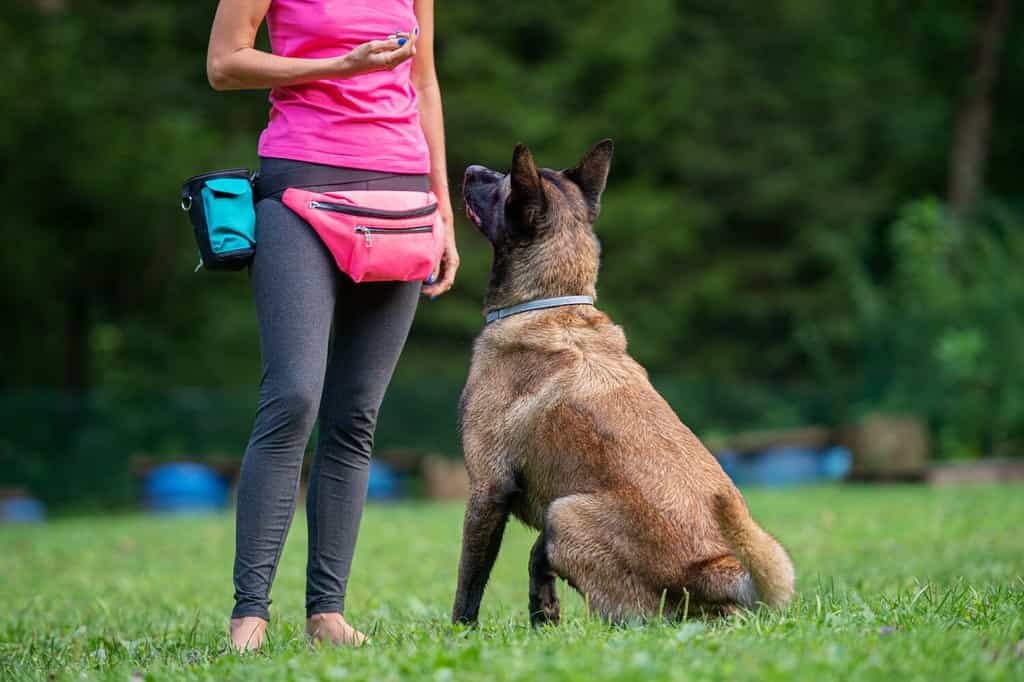
Teaching your dog to stay is more definitive than teaching them to wait.
©Gajus/Shutterstock.com
The biggest difference between teaching the commands “wait” and “stay” is the intent. When teaching them to wait, you’re giving them the message that there’s more to come. It’s a temporary command that is followed by a release. For instance, if you want your dog to wait for you to put on your shoes before taking them outside, you’d command them to wait. But then you’d release them when you were ready to go.
With the stay command, your dog knows to stay in that position for as long as they need to. For instance, if you want your dog to stay in the yard while you’re working outside, you will use the stay command. Only when you release them should they move.
When Can I Start Teaching My Dog to Stay?

You can begin teaching your puppy to stay at about eight weeks old.
©iStock.com/animalinfo
Puppies are ready to be homed at about eight weeks old. Surprisingly, you can start training them right away. Eight weeks is the perfect time to start teaching the basic commands of stay, come, and sit.
Naturally, there are differences between training puppies and training adult dogs. Since puppies have shorter attention spans, the training sessions should be shorter — about five minutes. There are other tips to remember as well when teaching your puppy the stay command:
- Always use positive reinforcement such as treats, praise, or playing with a favorite toy.
- Be consistent so you don’t confuse your pup.
- Train your pup in different environments, such as in the house, outside, at the park, etc.
- Praise your pup for every small success.
- Be patient. Your pup will make mistakes, but that’s okay.
How Do I Teach My Dog to Stay in One Place?
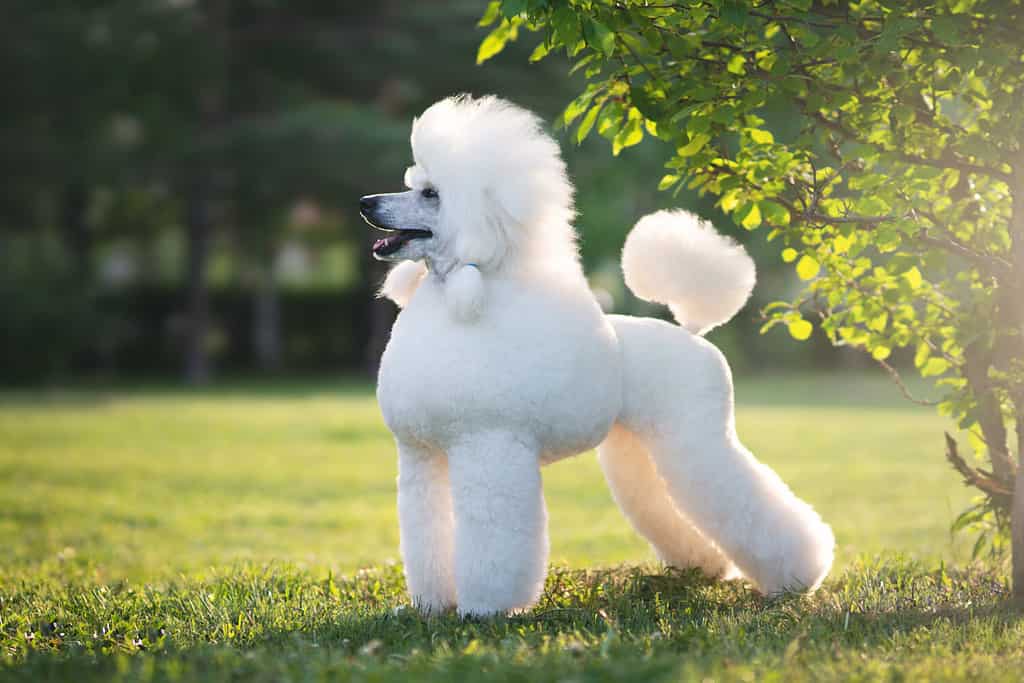
If you take it slowly, your dog can master the stay command.
©AntonMaltsev/Shutterstock.com
Key Tips
- Keep the training positive.
- Be consistent.
- Use a reward that has currency for your dog. Not all dogs are motivated by treats.
- Take your time and be patient.
- Feed and take your dog on a walk before training. They will be better able to follow your commands.
- Never move on unless your dog has been successful with the previous step.
Training your dog to stay is crucial to their safety and well-being. When your dog masters the stay command, they will be less likely to run into the road or into other trouble. But remember that training takes time and patience. So, make sure your expectations are realistic to avoid frustrating yourself and your pup.
Step 1: How to Begin
Before teaching the command to stay, make sure you have a leash — preferably 6 feet, treats, or other rewards that will motivate your dog and provide reinforcement for positive behavior, and a safe environment in which to train. If your yard is fenced in, that is probably the best place to start your training.
Step 2: Prepare Your Dog
First and most importantly, make sure your dog’s leash is secured before teaching the stay command. Secondly, have those rewards ready (treats, toys, heavy praise, etc.). Then, find a corner of your training area and have your dog sit in it, bottom snugly up against the corner.
Step 3: Teach the Command
Back up about 1 foot from your dog. It’s important to start this close before moving on. Remember, small steps and working slowly will be your best bet. Then, when you’re both in position, put your hand in the stay signaling position and say, “Stay.” If you stiffen your four fingers, your dog will run into them if they move, and it won’t be comfortable.
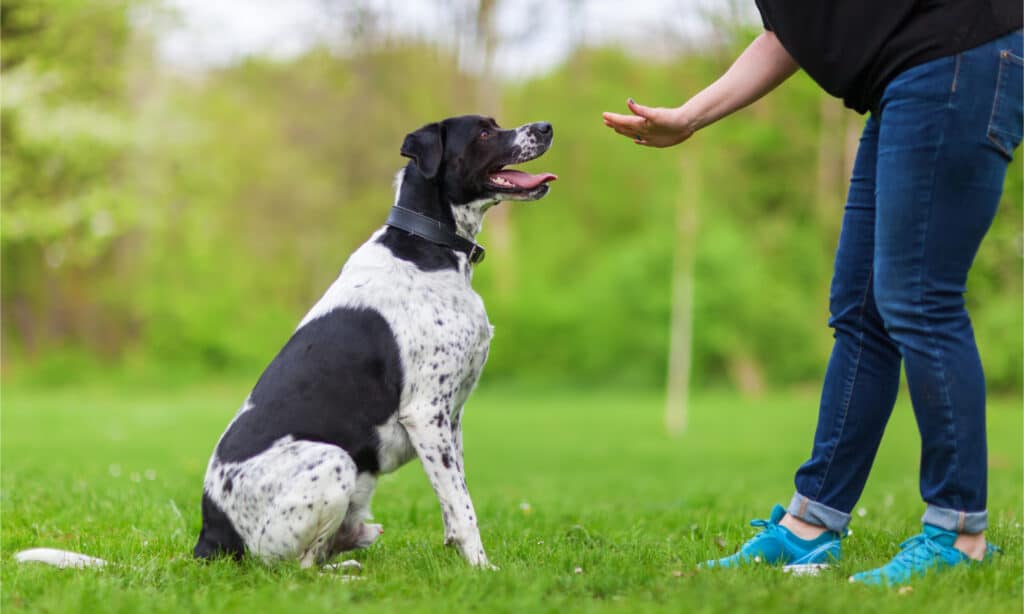
Use the hand signal for the stay command while verbally saying it.
©Christian Mueller/Shutterstock.com
Make sure that you use a firm, but positive tone with your dog. Once you use the stay command, hold your pup for one second only. If they stay for that second, pet them, give them praise, and reward them with a treat or other reward. This ensures success for your dog.
Step 4: Incremental Training
Now that your dog has mastered the stay command for a second while you stand a foot away from them, you can incrementally increase the distance and time. Back off 2 feet this time and hold your dog for two seconds. Again, praise, pet, and reward if they’re successful. If not, go back to 1 foot and one second.
Your training location is key to your dog’s success. When they’re backed up in a corner, they can’t move in three directions. They have no choice but to look at you. Therefore, this makes it more likely that they’ll listen to the say command.
Step 5: Continuation
If you can gradually get your dog to stay for 6 seconds from 6 feet away, you both have had a successful first training session. Make sure you end your training session on a positive note. When you pick up your training the next day, you can start from 3 or 4 feet if they were successful the previous day.
If your dog has successfully mastered the stay command at all increments to 9 feet and nine seconds, you can teach your dog to stay from 10 feet away for 10 seconds. Remember, you’re still using the corner of a fence to give your dog limited options for moving. By 7 feet, you will have to take your dog’s leash off for the remaining incremental training sessions. Make sure your dog is successfully following the command at 6 feet for six seconds before doing this.
Step 6: Moving On
Once your dog is successful with the command to stay for 10 seconds at 10 feet, you can move on to the next phase. At this point, you’ll take your dog out of the corner and place them against a wall or barrier with room to move on both sides. Go through the incremental steps again, beginning with 1 foot and one second.
After successfully going through incremental training against the wall, you can move on to the final stage. At this stage, you can place your dog in the middle of an area. Go through the steps again, starting with 1 foot away at one second of staying in place.
How Long Should My Dog Stay in Place?
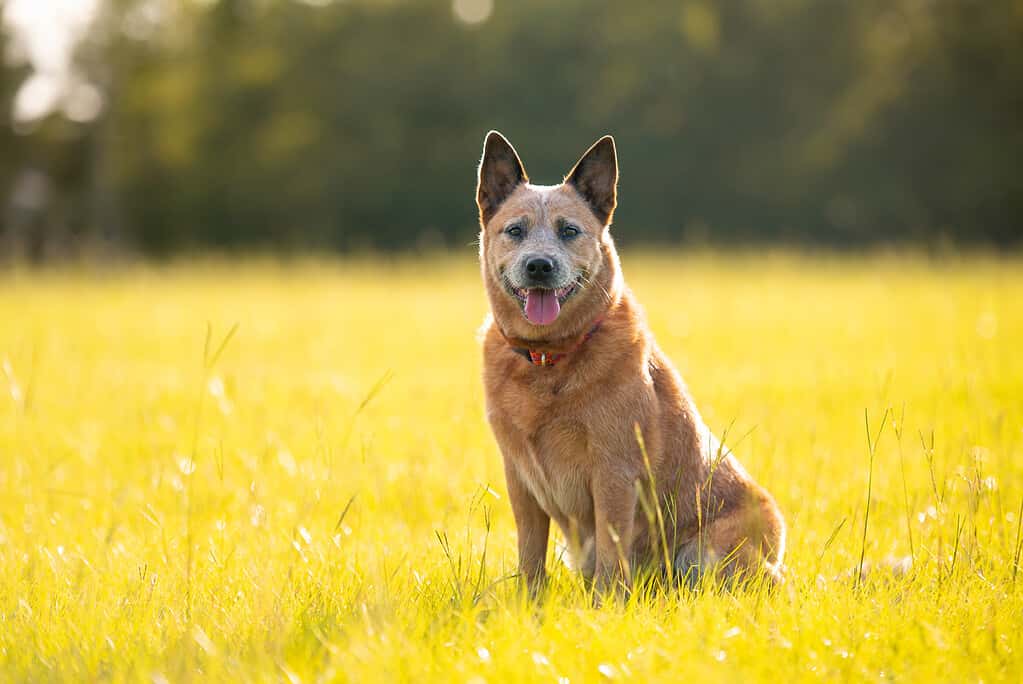
Your dog should master the stay command before moving on to the place command.
©Tatyana Consaul/ via Getty Images
The stay command should be used for short durations. When teaching your dog to stay, you’re making sure they don’t run out into danger or take off after another animal, like a cat. Or maybe you just want your dog to stay in place while you work in your garden. For longer durations or in instances where you don’t want your dog underfoot, you will want to teach your dog the place command.
Conclusion

Your puppy will love mastering the stay command!
©iStock.com/GlobalP
From the time you bring your puppy home, you will want to start training them to sit, stay, and come. The stay command will be essential for keeping them safe, as well as teaching them how to behave. As long as you use a firm tone, positive reinforcement, consistency, and patience, your pup will be well on their way to mastering the stay command.
Ready to discover the top 10 cutest dog breeds in the entire world?
How about the fastest dogs, the largest dogs and those that are -- quite frankly -- just the kindest dogs on the planet? Each day, AZ Animals sends out lists just like this to our thousands of email subscribers. And the best part? It's FREE. Join today by entering your email below.
Thank you for reading! Have some feedback for us? Contact the AZ Animals editorial team.

